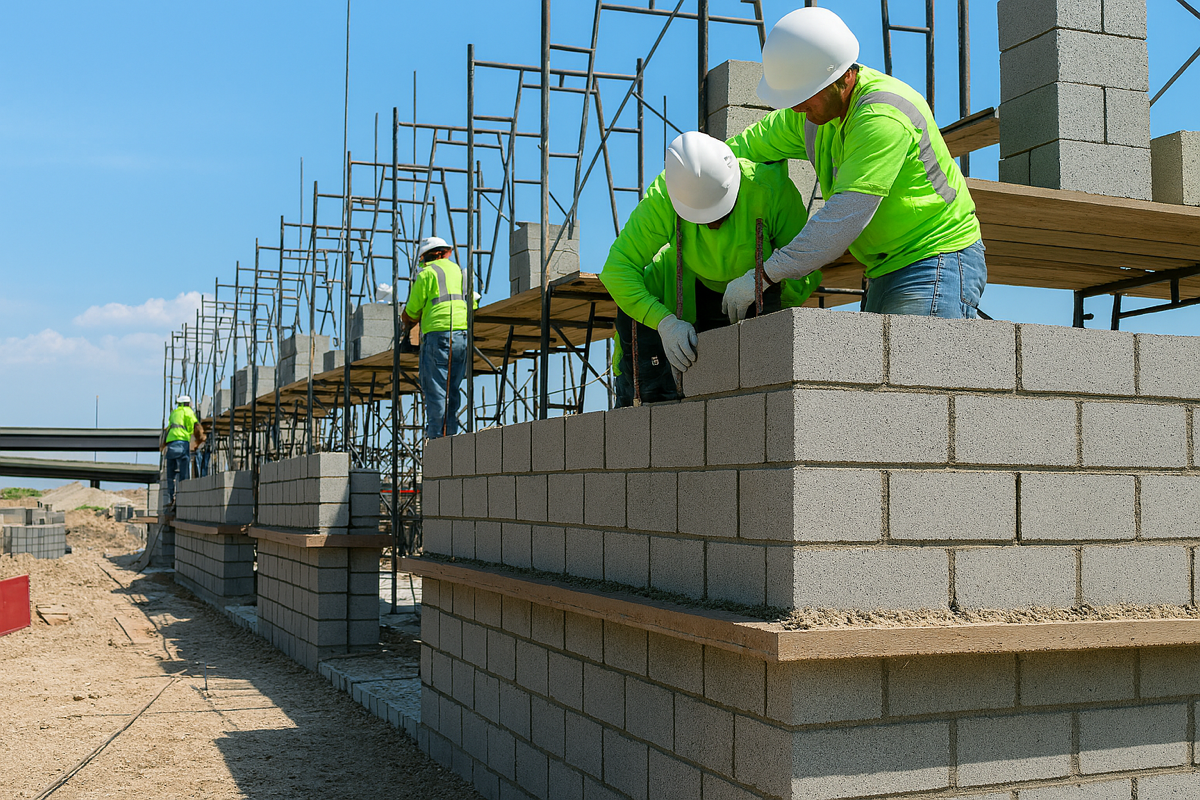
When most people hear “masonry,” they picture block walls, brick facades, or maybe a stone fireplace. But what many don’t realize is that not all masonry is created equal — especially when it comes to what’s considered structural.
If you’re building or remodeling in Arizona, understanding the difference between decorative and structural masonry can help you avoid costly mistakes, failed inspections, or even dangerous installs.
Here’s what homeowners, builders, and property owners need to know.
⸻
What Is Structural Masonry?
Structural masonry refers to block, brick, or stonework that carries load — meaning it supports part of the building or the weight of earth and pressure behind it. It’s not just for looks — it’s part of the actual structure.
Examples of structural masonry in Arizona include:
• Load-bearing CMU block walls on commercial buildings
• Retaining walls supporting earth or slope
• Elevator shafts or stairwells in multi-story buildings
• Fire-rated partition walls between tenant spaces
• Basement or stem walls in new builds
Unlike veneer or decorative facades, structural masonry must meet specific code requirements, be properly reinforced with rebar and grout, and often tie into the foundation or framing system.
⸻
What Is Non-Structural Masonry?
Non-structural masonry is any block, brick, or stonework that’s added for appearance or surface finish. It doesn’t carry load or contribute to the structural integrity of the building.
Common examples:
• Brick veneer on homes
• Stone accents or columns
• CMU block privacy walls (under certain heights)
• Fireplace surrounds and landscape features
These still require proper install — but the stakes are different. If structural masonry fails, it can compromise the building. If decorative masonry fails, it’s usually a cosmetic or water intrusion issue.
⸻
Why It Matters in Arizona
With Arizona’s heat, soil movement, and flash floods, structural integrity is non-negotiable.
If a block wall is intended to retain earth, enclose a structure, or support load — it must:
• Be reinforced with rebar tied to footings
• Be core-filled with grout for strength
• Include control joints to handle movement
• Be laid level, square, and to spec
We’ve seen plenty of “retaining walls” in Phoenix and Gilbert built without reinforcement. After the first heavy rain or backfill, they lean, crack, or collapse.
The same goes for multi-unit commercial builds. If firewalls or stairwells aren’t properly built with fire-rated CMU and full-core fills, you risk life-safety violations — and failed inspections that can delay your CO.
⸻
How to Know What You’re Getting
Not sure if your project is structural? Ask these 3 questions:
1. Does this wall or feature support weight, earth, or building loads?
If yes, it’s structural.
2. Is this required by code, permit, or engineering?
If yes, it’s structural.
3. Will this fail if it’s not properly reinforced?
If yes, it’s structural.
If you’re working with a contractor or mason, ask what type of masonry system they’re using — and make sure it includes all structural elements: footings, vertical rebar, grout fills, and tie-backs.
⸻
Choose a Crew That Understands the Difference
At Blue Collar Masonry, we work on both structural and non-structural projects across Arizona. But when it comes to structural builds — we don’t play games.
Our crews:
• Follow engineered plans and city code
• Pour deep, reinforced footings based on soil conditions
• Use vertical and horizontal rebar in all load-bearing systems
• Grout cores and install expansion joints properly
• Pass inspections the first time
Whether it’s a CMU elevator shaft in Phoenix or a long retaining wall in Scottsdale, we build it the way it should be built — clean, strong, and compliant.